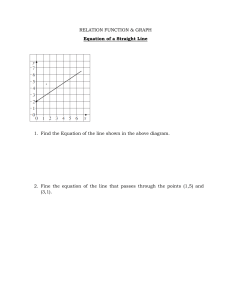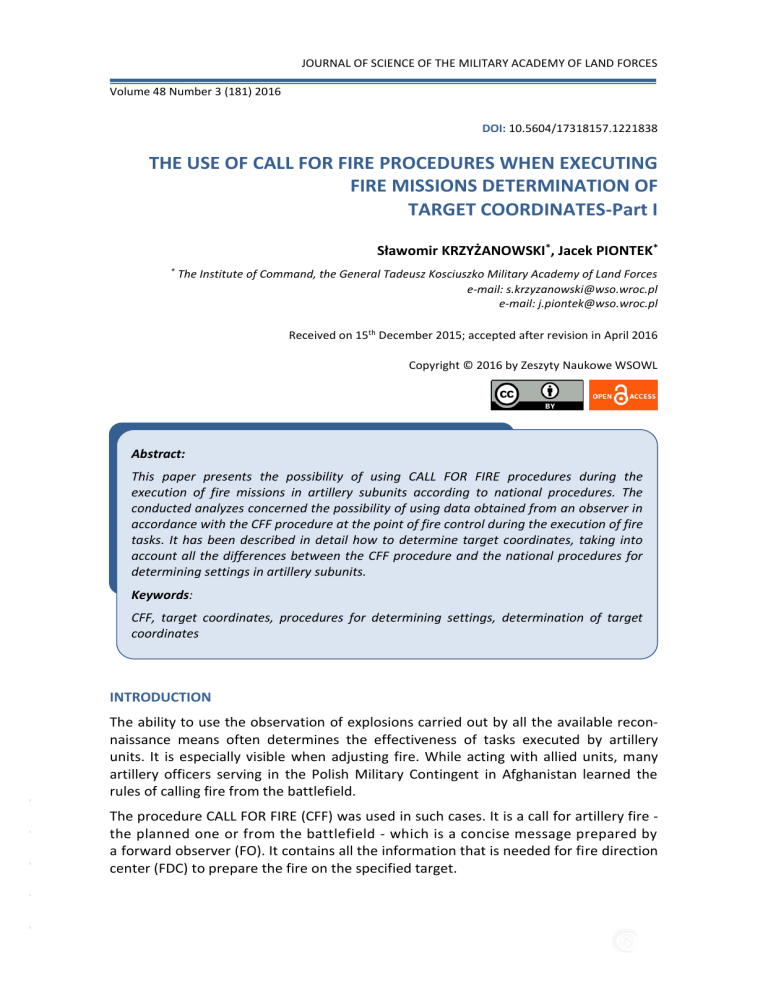
JOURNAL OF SCIENCE OF THE MILITARY ACADEMY OF LAND FORCES Volume 48 Number 3 (181) 2016 ISSN 1731-8157 DOI: 10.5604/17318157.1221838 THE USE OF CALL FOR FIRE PROCEDURES WHEN EXECUTING FIRE MISSIONS DETERMINATION OF TARGET COORDINATES-Part I Sławomir KRZYŻANOWSKI*, Jacek PIONTEK* * The Institute of Command, the General Tadeusz Kosciuszko Military Academy of Land Forces e-mail: s.krzyzanowski@wso.wroc.pl e-mail: j.piontek@wso.wroc.pl Received on 15th December 2015; accepted after revision in April 2016 Copyright © 2016 by Zeszyty Naukowe WSOWL Abstract: This paper presents the possibility of using CALL FOR FIRE procedures during the execution of fire missions in artillery subunits according to national procedures. The conducted analyzes concerned the possibility of using data obtained from an observer in accordance with the CFF procedure at the point of fire control during the execution of fire tasks. It has been described in detail how to determine target coordinates, taking into account all the differences between the CFF procedure and the national procedures for determining settings in artillery subunits. Keywords: CFF, target coordinates, procedures for determining settings, determination of target coordinates - - - - - INTRODUCTION The ability to use the observation of explosions carried out by all the available reconnaissance means often determines the effectiveness of tasks executed by artillery units. It is especially visible when adjusting fire. While acting with allied units, many artillery officers serving in the Polish Military Contingent in Afghanistan learned the rules of calling fire from the battlefield. The procedure CALL FOR FIRE (CFF) was used in such cases. It is a call for artillery fire the planned one or from the battlefield - which is a concise message prepared by a forward observer (FO). It contains all the information that is needed for fire direction center (FDC) to prepare the fire on the specified target. THE USE OF CALL FOR FIRE PROCEDURES WHEN EXECUTING FIRE MISSIONS … The issue of the use of the Call For Fire procedures while performing fire missions has been described in two articles. The first part is devoted to determining the target coordinates and principles of the use of observer’s reports for the calculation of target coordinates according to national procedures. The second part concerns the calculation of corrections during adjusting fire and the control of fire for effect.The purpose of this article is to present not only the CFF procedure itself, because it is more commonly known, but the rules for the use of observer’s reports during the calculation of target coordinates according to national procedures. In the course of the execution of the fire mission, FO submits adequate reports pursuant to the CFF procedure, while the officers in FDC should use them in accordance with the procedures in force in the Polish Armed Forces. This particularly concerns the following elements of determining settings and performing a fire mission: − determination of target coordinates; − calculation of corrections in the range and direction when adjusting fire; − calculation of corrections in the range and direction when conducting fire for effect. 1. THE CFF PROCEDURE During the implementation of the CFF procedure the necessary information is provided by a forward observer (FO), while the fire direction center (FDC) receives a call. The CFF is a call for fire, not a command. It must be transmitted quickly, in such a clear manner that it is unmistakably understood. It is recommended to send information immediately after its preparation, without waiting until the complete CFF is prepared. Although the CFF consists of six components, the information contained in the registration procedure is sent in three parts.1 The first part of the CFF procedure includes: − the observer’s identification (the call sign of an observer); − the command to prepare for the implementation of the fire support (warning order). The second part of the CFF procedure provides information regarding a target location. It allows an observer to forward a message on the target in three ways: − using rectangular plane coordinates (GRID); − using polar coordinates (POLAR PLOT); − by transferring from a known field point (SHIFT FROM A KNOWN POINT).2 The third part of the CFF procedure contains information on: - Narloch J., Świętochowski N., Piontek J., Procedury wezwania ognia z pola walki, a script of WSOWL, Wrocław 2014, p. 6. 2 Szpadzik J., Na wezwanie – współdziałanie z JTAC, Przegląd Sił Zbrojnych no. 6/2014, p. 24-25. - 1 - - − the target description, i.e. a detailed characterization of the most important target parameters; - 38 Sławomir KRZYŻANOWSKI, Jacek PIONTEK − the method of engagement; − the method of fire and control. From the first part of the CFF procedure the information on the location of an observer is obtained. FO reports his/her position using the rectangular plane coordinates. From the point of view of procedures for determining settings, it is important for FDC to know the altitude of an observer. In the case if only the rectangular plane coordinates have been delivered, the altitude of an observer should be read from a map. When transmitting information about the position of a target with the use of polar coordinates (polar plot), FO should provide the azimuth of an observer given in thousandths and the distance inclined to the target. The distance to a target may be rounded up to 100 m as a standard, but for the needs of the artillery it should be transmitted with maximum accuracy. However, it is significant that in the allied system the round angle is divided into 6400 units called mils, whereas in the Polish Armed Forces the round angle is divided into 6000 units referred to as the artillery thousandth. Accord- - - - - As mentioned above, the second part of the CFF procedure contains information about the position of a target. The first way is to provide information on the position of a target using rectangular plane coordinates. The standard CFF report contains six-digit coordinates of a target. With only six-coordinates obtained, the accuracy of the coordinates is only 100 m. The greater the accuracy of target coordinates, the closer to the target the first shell falls during adjusting fire. From the point of view of procedures for determining settings it would be important to make the identification of target coordinates as accurate as possible. If the target is higher in relation to the FO’s position, the word UP is used, when lower - DOWN. In the case when the difference in altitude between an observer and a target does not exceed 35 m, notwithstanding whether it is higher or lower, the observer does not report it. This means that in FDC the altitude of an observer is assumed as the altitude of a target. According to the Polish procedures, having detected an object (a target) an observer can report the rectangular coordinates of the target and the altitude. The position angle of a target is calculated based on the difference in altitude between the target and the fire position. In addition, the correction of the angle of the sight on the position angle of the target is specified from firing tables on the basis of the calculated position angle of the target and the sight determined to the target. The sum of these two elements: the angle position of the target and the correction of the angle of the sight on the angle position of the target gives the correction of the elevation angle on the difference in the altitude of the target and the fire position, which is included directly in the sight calculated to the target of (artillery calculators SKART) or introduced on a spirit level mechanism. It should be emphasized that the exact calculation of these elements is important only during the fire for effect without adjusting fire. During adjusting fire or during the CFF procedure, the failure to have regard for the exact location of the target by virtue of the altitude will cause the greater distance of the first shell from the target. It can therefore be concluded that during fire adjustment, the precise determination of the height of a target is less important, and the omission of this element shortens the duration of a fire mission. - 39 THE USE OF CALL FOR FIRE PROCEDURES WHEN EXECUTING FIRE MISSIONS … ingly, while operating within the allied system, FO will report the azimuths in the thousandth Rimailho. There is a relation between the artillery thousandth and Rimailho, which should be taken into account in FDC while executing a fire mission. Based on a comparison between both types of the thousandths, it can be concluded that the thousandth Rimailho is less than the artillery thousandth by about 6-7%. This means that when transferring information on the target position using polar coordinates (polar plot), FDC should calculate the azimuth on a target given in mils for the artillery thousandth. To do this, the correction coefficient of 0.9375 ought to be applied. The azimuth on a target is converted according to the formula: TT [tys.] TM [mils] 0.9375 (1) where: TT [tys.] - the azimuth on a target in the artillery thousandth; TM [mils] - the azimuth on a target specified by FO in mils. Example 1 FO reported to FDC the target coordinates: “DIRECTION 2500, DISTANCE 1240, UP 45”. The altitude of the observer determined on the basis of a map is: Z PO = 85 m. Task: Determine the polar coordinates to be used in the procedure of determining settings. Solution: a) The calculation of the azimuth on the target in artillery thousandths TT [tys.] TM[mils] 0.9375 25 00 0.9375 23 44[tys.] b) The calculation of the altitude of the target. ZC ZPO 45 85 45 130m When determining settings, FDC uses polar coordinates to the target: 23-44, 1240, the altitude 130. When transmitting information about the position of a target with the use of the third method – the shift from a known point, FO should provide: − the characteristics of the point from which a target will be indicated3; − the azimuth on a target; - − the distance of a target from the point of known coordinates in the direction (in meters); 3 - - - − the distance of a target from the point of known coordinates in the range (in meters). - 40 Points must be known in advance by FO and FDC. Sławomir KRZYŻANOWSKI, Jacek PIONTEK The graphical representation of the shift from a known field point is shown in Figure 1. Fig. 1. The graphical representation of the shift from the known field point Source: own study In case of a fire mission carried out with the use of this method of a target acquisition, FDC must calculate the target coordinates first. To do this, the topographic azimuth and the distance from an observation point to a known field point dKP should be calculated in FDC in advance by solving an inverse surveying task. Alternatively, the altitude of a field point can be read from a map. Knowing the data referred to above about the known field point, the calculation of the target coordinates can be made using three methods: − in the accurate manner - by double-solving a usual surveying task; − in the approximate manner - by identifying the increments of coordinates E and N using the artillery board; − in the approximate manner - by calculating the approximate distance to a target and solving a usual surveying task. - - - - Figure 2 shows the graphical representation of the calculation of coordinates using the first method, when a target is located on the left side of the point of known coordinates. - 41 THE USE OF CALL FOR FIRE PROCEDURES WHEN EXECUTING FIRE MISSIONS … Stage I Fig.2. Stages of determining rectangular plane coordinates of the target by double-solving the usual surveying task – the target to the left of the point of known coordinates - - - Stage II - Source: Own study - 42 Sławomir KRZYŻANOWSKI, Jacek PIONTEK Stage I - Stage II Fig.3. Stages of determining rectangular plane coordinates of the target by double-solving the usual surveying task – the target to the right of the point of known coordinates. Stages of determining rectangular plane coordinates of a target by double-solving a usual surveying task: - - - Source: Own study - 43 THE USE OF CALL FOR FIRE PROCEDURES WHEN EXECUTING FIRE MISSIONS … The calculation of rectangular plane coordinates of an intermediate point. For this purpose, the azimuth from the point of known coordinates to the intermediate point needs to be calculated from the equation: TPP TC 15 00 (a target to the left of a point of known coordinates) (2) TPP TC 15 00 (a target to the left of a point of known coordinates) (3) where: TPP - the azimuth from a point of known coordinates on an intermediate point; TC - the azimuth from an observation point on a target. The calculation of the azimuth from an intermediate point from the formula: TPPC TC 30 00 (a target is in front of the point of known coordinates) (4) TPPC TC (a target is behind the point of known coordinates) (5) where: TPPC - the azimuth from an intermediate point on a target. The calculation of target coordinates by solving a usual surveying task. Example 2 FO (BRAVO-12) reported: FOXTROT-1 THIS IS BRAVO-12. MY POSITION IS 34 UCD 43562 76543, ALTITUDE 58. ALL DIRECTIONS IN 6000 MILS SCALE. PREPARE TO COPY CALL FOR FIRE. OVER; In his/her report SALT FO (BRAVO-12) gave the information about the KNOWN POINT. The coordinates of the Reference Point 1 (KNOWN POINT): FOXTROT-1 THIS IS BRAVO-12. KNOWN POINT 1 IS 34 UCD 43732 77685, ALTITUDE 58. DIRECTIONS 1-41, DISTANCE 1155. OVER; The position of the target VC7201 with the use of the shift from the KNOWN POINT: FOXTROT-1 THIS IS BRAVO-12. FIRE MISSION, SHIFT ON KNOWN POINT 1. OVER. SHIFT KNOWN POINT 1. DIRECTION 5821. LEFT 380. DROP 110 OVER. Task: As FDC, calculate the coordinates of the target based on the data reported by FO. Solution: The calculation of the azimuth from the point of known coordinates on the intermediate point. - TPP TC 15 00 58 21 15 00 43 21 - (the target to the left of the point of known coordinates) The calculation of the azimuth from the intermediate point on the target. - - TPPC TC 30 00 58 21 30 00 28 21 - 44 Sławomir KRZYŻANOWSKI, Jacek PIONTEK (the target is in front of the point of known coordinates) The calculation of rectangular plane coordinates of the intermediate point. EPP EKP dKPPP sinTPP 43732 380 [sin(43 21 6)] 43732 380 (0.9825) 43732 373.34 43359 NPP NKP dKPPP sinTPP 77685 380 [cos(43 21 6)] 77685 380 (0.1864) 77685 70.81 77614 The FDC Commander reported: “Coordinates of the intermediate point 34 UCD 4335977614”. The calculation of rectangular plane coordinates of the target EC EPP dPPC sinTPPC 43359 110 [sin(28 21 6)] 43359 110 0.1864 43359 20.50 43379 NC NPP dPPC sinTPPC 77614 110 [cos(28 21 6)] 77614 110 (0.9825) 77614 108 77506 The FDC Commander reported: “Coordinates of a target: 34 UCD 4337977506”. The above example of transmitting information on a target position - a shift from a known field point - by double-solving a usual surveying task (the accurate manner) does not represent all ways. The second way to calculate coordinates of a target by shifting from a known field point involves the use of the artillery board.4 Through its use increments of coordinates E and N can be identified in the approximate manner. The determination of target coordinates consists in adding the calculated increments of coordinates to rectangular plane coordinates of a KNOWN POINT. In order to use the artillery board to adjusting fire so as to determine the increments of coordinates it is necessary to have: − the azimuth from an observation point on a target, − the position of a target in relation to a KNOWN POINT. Such information is delivered by an observer in a report on a target position, for example: “SHIFT KNOWN POINT 1. DIRECTION 5821. LEFT 380. DROP 110”. If the target coordinates are determined in this way, the middle of the artillery board is taken as a point of known coordinates KNOWN POINT. Stages of determining rectangular plane coordinates of a target with the use of the artillery board: The Author of the article along with Major Jacek Piontek and Captain Marek Śliwinski proposed the described solution as an improvement project at the level of the Department of Science and Higher Education. The procedure of the project verification and approval took more than three years. The proposal was accepted by the Missile Forces and Artillery Directorate of the Land Forces Command and received a positive opinion for use in the process of training troops in subunits of missile forces and artillery. The project was implemented in two types of the Armed Forces (Land Forces and Special Forces) on 10.30.2014. - - - - 4 - 45 THE USE OF CALL FOR FIRE PROCEDURES WHEN EXECUTING FIRE MISSIONS … − Having targeted the upper part of the artillery board according to the observed azimuth on a target, the position of a target is marked on the artillery board on the basis of the observer’s report; − The upper part of the artillery board is set on the azimuth 0-00 and the increments of coordinates E and N expressed in meters are read from the bottom of the board; − The read increments of coordinates are added to target coordinates of a KNOWN POINT. Target coordinates are calculated from the equation: EC EKP E (6) NC NKP N (7) where: Ec; Nc - rectangular plane coordinates of a target; EKP; NKP - rectangular plane coordinates of a point of known coordinates KNOWN POINT; E ; N - increments of coordinates read from the artillery board. An increment of the coordinate E read from the left side of the artillery board is marked ‘-‘, and from the right side – ‘+’. An increment of the coordinate N read from the upper side of the artillery board is marked ‘+’, and from the bottom side - ‘-‘. Example 3 Calculate the target coordinates with the use of the artillery board, based on the data included in Example 2. Solution: Stage I – directing the upper part of the artillery board according to the observed azimuth on the target. Marking the target on the board on the basis of the data: − Tc=58-21; − the distance of the target from the point of known coordinates in the direction in meters –380m to the left; Figure 4 represents marking the target on the artillery board. - - - - − the distance of a target from the point of known coordinates in the range in meters –110m drop. - 46 Sławomir KRZYŻANOWSKI, Jacek PIONTEK Fig. 4. Stage I of using the artillery board for the determination of the target coordinates. Source: Own study Stage II – setting the upper part of the artillery board on the azimuth 0-00 and reading the increments of the coordinates E and N expressed in meters from the bottom part of the board. Figure 5 presents the proceeding. Fig. 5. Stage II of using of the artillery board for the determination of the target coordinates. Source: Own study. Adding the read increments of coordinates to the target coordinates of the KNOWN POINT. EC EKP E 43732 (355) 43377 NC NKP N 77685 (178) 77507 The Commander of FDC reported: “The target coordinates: 34UCD4337777507”. - - - - The target coordinates are calculated following the formulas 6 and 7 - 47 THE USE OF CALL FOR FIRE PROCEDURES WHEN EXECUTING FIRE MISSIONS … The third approximate method of calculating target coordinates – in the framework of the shift from a known field point - is performed by the estimation of the distance to a target and solving a usual surveying task. The graphical representation of the calculation of the coordinates using the third method is shown in Figure 6. Fig.6. The graphical representation of the determination of the target coordinates by the estimation of the distance to the target. Source: Own study. Stages of the determination of rectangular plane coordinates by estimating the distance to a target: − The calculation of the distance from an observation point to a point of known coordinates based on an inverse surveying task. − The calculation of the approximate distance from an observation point to a target, following the equation: dC dKP dKP where: - dC - the approximate distance from an observation point to a target; - dKP - the distance from an observation point to a point of known coordinates; - - dKP - the distance of a target from the point of known coordinates in the range in meters . - 48 Sławomir KRZYŻANOWSKI, Jacek PIONTEK The calculation of target coordinates by solving a usual surveying task. Example 4 Calculate the target coordinates using the approximate manner based on the data from Example 2. Solution: The calculation of the distance from the observation point to the point of known coordinates KP on the basis of the inverse surveying task. N NPO NKP 76543 77685 1142 E EC ESO 43562 43732 170 k E 170 0,1489 N 1142 t arctg k 8,4691 ttys t TPOKP 1 41 6 dPOKP E 2 N2 1702 11422 1155 The Commander of FDC reported: “Polar coordinates to the KP 1-41,1155”. a) The calculation of the approximate distance from the observation point to the target. dC dKP dKP 1155 (110) 1045 b) The calculation of the rectangular plane coordinates of the target through solving the usual surveying task. EC EPO dC sinTC 43562 1045 [sin(58 21 6)] 43562 1045 (0.1864) 43562 195 43367 NC NPO dC sinTC 76543 1045 [cos(58 21 6)] 76543 1045 0.9825 76543 1026.71 77570 Table 1 shows a comparison of the accuracy of determining target coordinates with the use of all the methods described – in the framework of the shift from a known field point. It was assumed that the accuracy of the calculation of target coordinates with the accounting method (the first one described above) is the greatest and the second and third ways were compared to these values of coordinates. The analysis of the data in Table 1 allows the statement that target coordinates specified with the use of the artillery board are more accurate in comparison to coordinates set out in the accounting way. It should also be noted that the calculation of target coordinates using the artillery board is faster than the approximate method. Although - - - - The Commander of FDC reported: “The target coordinates 34UCD 4336777570”. - 49 THE USE OF CALL FOR FIRE PROCEDURES WHEN EXECUTING FIRE MISSIONS … the application of the latter is burdened with larger errors, it can be successfully used in the course of adjusting fire. Table 1. The accuracy of the determination of the target coordinates Target coordinates determined: The first method The second method The third method Accounting Using the artillery board Estimating Target coordinates: Target coordinates: Target coordinates: 34 UCD 4337977506 34UCD 4337777507 34UCD 4336777570 E 43377 43379 2 E 43367 43379 12 N 77507 77506 1 N 77570 77506 64 Error of determining target coordinates CONCLUSION The presented analysis of selected problems connected with determining target coordinates based on the CFF procedure indicates the complexity of the problem and the need to describe it. The issue is still open, even though it has been used in practice by our subunits for many years. The proposals and conclusions contained in the article are not decisive, despite the fact that they are based on detailed investigations and a thorough analysis of the literature in this area. For these reasons, the statements contained in the article should be considered as a prelude to a discussion and initiation for further exploration in this area. REFERENCES 1. Narloch J., Świętochowski N., Piontek J., Procedury wezwania ognia z pola walki, skrypt WSOWL im. gen. Tadeusza Kościuszki, Wrocław 2014. 2. Szpadzik J., Na wezwanie – współdziałanie z JTAC, Przegląd Sił Zbrojnych no. 6/2014. 3. Piontek J., Krzyżanowski S., Śliwiński M., Instrukcja użytkowania planszetu do wstrzeliwania, Wyższa Szkoła Oficerska Wojsk Lądowych, Wrocław 2011. Sławomir KRZYŻANOWSKI, Ph.D., Eng.- Position – Lecturer – Operations Support Department, General Tadeusz Kościuszko Military Academy of Land Forces – Wrocław. Main scientific interests – deployment of artillery subunits in combat operations. Author of seven scholarly papers, eleven series of course lectures and 13 articles on artillery. Co-author of three improvement projects, two of which have been implemented at the level of the branches of the armed forces and one at the level of the academy. Jacek PIONTEK, M.Sc., Eng. Position – Specialist, the General Command of the Branches of the Armed Forces, the Missile and Artillery Forces Board. Main scientific interests - - - - BIOGRAPHICAL NOTES - 50 Sławomir KRZYŻANOWSKI, Jacek PIONTEK – fulfilment of the tasks related to the survey and geodetic preparation in artillery subunits, deployment of artillery subunits in combat operations. Author of nine series of course lectures and seven papers on artillery. Co-author of three improvement projects, two of which have been implemented at the level of the branches of the armed forces and one at the level of the academy. HOW TO CITE THIS PAPER: - - Krzyżanowski S., Piontek J., (2016). The use of call for fire procedures when executing fire missions determination of target coordinates-part I. Zeszyty Naukowe Wyższa Szkoła Oficerska Wojsk Lądowych im. gen. Tadeusza Kościuszki Journal of Science of the gen. Tadeusz Kosciuszko Military Academy of Land Forces, 48 (3), p. 37-51, http://dx.doi.org /10.5604/17318157.1221838 http://creativecommons.org/licenses/by/4.0/ - - This work is licensed under the Creative Commons Attribution International License (CC BY). - 51
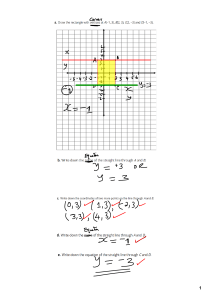
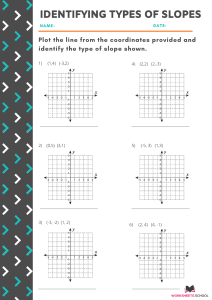
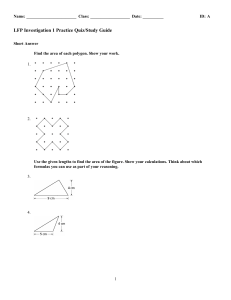


![Pre-class exercise [ ] [ ]](http://s2.studylib.net/store/data/013453813_1-c0dc56d0f070c92fa3592b8aea54485e-300x300.png)
